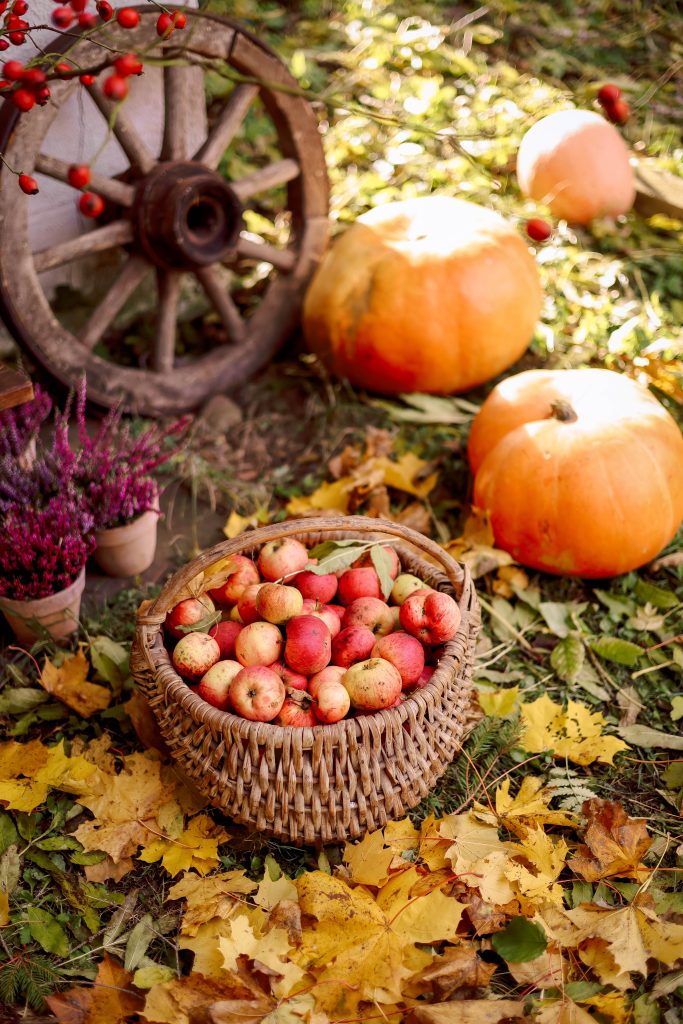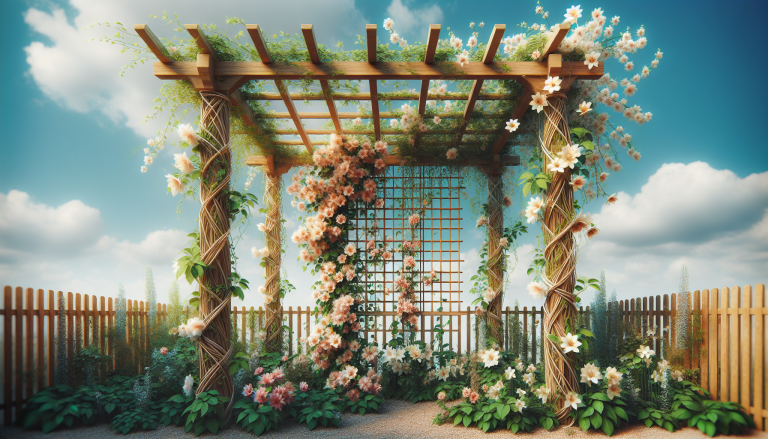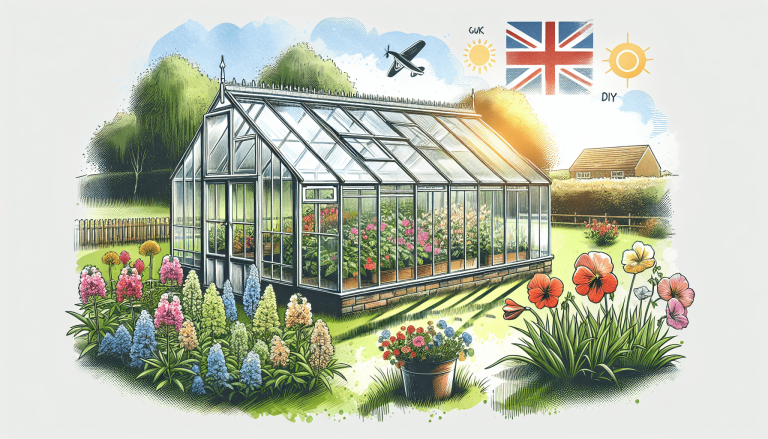You’re eager to bring out the green thumb within you and cultivate a beautiful garden, but before you embark on this horticultural adventure, it’s essential to be aware of some common gardening mistakes to avoid. From overwatering your plants to neglecting to provide them with adequate sunlight, these missteps can hinder your gardening success. By being mindful of these pitfalls, you’ll pave the way for thriving blooms, luscious foliage, and a rewarding gardening experience.
Table of Contents
ToggleLack of Planning
Not researching the suitable plants for your region
One of the most common gardening mistakes to avoid is not researching the suitable plants for your specific region. Different plants thrive in different climates, soil types, and sun exposures. By not conducting proper research, you may end up choosing plants that are not adapted to your region, leading to poor growth and potentially even death of the plants. It is crucial to take into consideration the hardiness zones and recommended plant species for your area to ensure the success of your garden.
Failing to consider the size and layout of your garden
Another mistake gardeners often make is failing to consider the size and layout of their garden. Before starting your gardening journey, it is important to assess the available space and plan accordingly. Consider factors such as the dimensions of your garden, sun exposure, and any existing structures or obstacles. Failing to plan the layout properly can result in overcrowding, poor plant growth, and a lack of aesthetic appeal. Take the time to carefully plan and visualize the arrangement of your plants to create a beautiful and functional garden.
Neglecting to choose the right soil for your plants
The importance of choosing the right soil for your plants cannot be overstated. Different plants have different soil requirements, such as pH levels and nutrient content. Neglecting to choose the right soil can lead to stunted growth, nutrient deficiencies, and ultimately, the failure of your plants. Testing the pH and nutrient levels of your soil is a crucial step in determining its suitability for your desired plant species. Additionally, consider amending the soil with organic matter or fertilizers to support healthy plant growth.
Overwatering
Watering too frequently
Overwatering is a common mistake among novice gardeners. It is important to understand that plants have different water requirements, and watering them too frequently can lead to root rot, fungal diseases, and even plant death. The key to proper watering is to strike a balance between providing enough moisture without drowning the roots. Monitor the moisture level of your soil by checking it with your finger or using a moisture meter. Only water when the soil feels dry to the touch, and adjust your watering schedule based on the specific needs of your plants.
Not providing proper drainage
Proper drainage is essential for the health and survival of your plants. If the soil in your garden retains too much water, it can suffocate the roots and cause root rot. It is important to ensure that your garden has adequate drainage to prevent waterlogged soil. One way to improve drainage is by amending the soil with organic matter like compost or sand to increase its porosity. Additionally, consider planting in raised beds or containers with drainage holes to ensure excess water can escape.
Using incorrect watering techniques
In addition to watering frequency and drainage, using incorrect watering techniques can also contribute to the overwatering problem. Avoid using overhead sprinklers as they can promote the growth of foliage diseases. Instead, opt for methods like drip irrigation or soaker hoses that deliver water directly to the roots, minimizing water waste and reducing the risk of foliar diseases. Furthermore, watering in the early morning or late afternoon allows water to be absorbed by the plants before the heat of the day, reducing evaporation and giving the foliage time to dry before nightfall.
Neglecting Pest Control
Failing to identify common garden pests
Neglecting pest control can have detrimental effects on your garden. Many common garden pests can wreak havoc on your plants if left unchecked. From aphids and caterpillars to snails and slugs, familiarizing yourself with common garden pests is essential. By learning to identify and monitor these pests, you can take action at the first sign of an infestation, preventing further damage to your plants.
Not implementing preventative measures
Prevention is key when it comes to pest control. By implementing preventative measures, you can reduce the risk of a pest infestation in your garden. Simple steps such as practicing good garden hygiene, regularly removing weeds, and maintaining healthy plants can help deter pests from your garden. Additionally, consider using natural pest control methods such as companion planting, using insect-repelling plants, and introducing beneficial insects to keep pest populations in check.
Ignoring signs of pest infestation
Ignoring signs of pest infestation is a mistake that can lead to severe damage to your garden. Many pests multiply rapidly and can quickly take over your plants if not addressed promptly. Be vigilant and regularly inspect your plants for any signs of pests, such as chewed leaves, curling or yellowing foliage, or the presence of eggs or larvae. Taking immediate action when you identify a pest problem will help prevent the infestation from spreading and causing further harm.
Improper Pruning
Pruning at the wrong time of year
Pruning is an important aspect of garden maintenance, but it is essential to prune at the right time of year. Pruning at the wrong time can result in reduced flowering, susceptibility to diseases, and weakened plants. Each plant has its own optimal pruning time, which may vary depending on whether it blooms in spring, summer, or fall. Research the specific pruning requirements for each of your plants and schedule your pruning sessions accordingly to ensure healthy growth and abundant blooms.
Cutting too much or too little
Finding the right balance is crucial when it comes to pruning. Cutting too much can shock the plant, weaken its structure, and inhibit its ability to recover. On the other hand, cutting too little can lead to overcrowding, poor airflow, and reduced flowering. It is important to familiarize yourself with the recommended pruning techniques for different plant species and adhere to proper pruning practices. Take your time, be cautious, and aim for a balanced approach to pruning to promote the overall health and vitality of your plants.
Using incorrect tools and techniques
Using the correct tools and techniques is essential for successful pruning. Using dull or inappropriate tools can result in messy cuts, torn bark, and increased risk of disease transmission. Invest in quality pruning tools such as bypass pruners, loppers, and pruning saws, and ensure they are clean and sharp before each use. Additionally, educate yourself on the proper pruning techniques for different types of plants, such as the angle and location of each cut, to promote optimal healing and minimize stress on the plants.
Overcrowding
Planting too closely together
Planting too closely together is a common mistake that can lead to overcrowding and competition for resources among your plants. Overcrowding restricts airflow, creates shade, and hampers the overall growth and development of your plants. It is important to give each plant enough space to grow to its full potential. Research the recommended spacing guidelines for different plant species and consider their mature sizes when planning your garden layout. Providing adequate spacing will ensure healthier plants, better airflow, and a more visually pleasing garden.
Not considering the growth potential of plants
During the planning phase of your garden, it is crucial to consider the growth potential of the plants you intend to grow. Some plants have vigorous growth habits and can quickly outgrow their designated spaces if not given ample room to expand. Failing to consider the potential growth of your plants can result in overcrowding, shading and stunting of neighboring plants, and an overall imbalance in your garden design. Take into account the height, spread, and growth patterns of each plant to ensure they have enough space to thrive.
Failing to provide adequate space for each plant
In addition to considering the growth potential of your plants, failing to provide adequate space for each individual plant can hinder its overall health and productivity. Plants need sufficient space for their root systems to grow, access nutrients, and establish a strong foundation. Proper spacing also allows for proper air circulation, reducing the risk of fungal diseases and promoting healthy growth. Ensure that each plant has enough room to spread its roots and foliage, and avoid overcrowding to create a well-balanced and visually appealing garden.
Ignoring Soil Quality
Not testing the pH and nutrient levels of the soil
Ignoring the quality of your soil can have significant ramifications on the health and productivity of your plants. Different plants have specific soil pH and nutrient requirements for optimal growth. Neglecting to test the pH and nutrient levels of your soil can lead to imbalances and deficiencies, impacting the ability of your plants to thrive. Invest in a soil testing kit or send a sample to a local extension office to determine the pH and nutrient composition of your soil. Based on the results, you can make informed decisions about soil amendments and fertilization.
Neglecting to amend the soil as needed
Amending the soil is a critical step in ensuring its fertility and suitability for plant growth. Many gardeners neglect this aspect, leading to poor plant performance. Based on the results of your soil test, you may need to add organic matter, such as compost or well-rotted manure, to improve soil structure, drainage, and nutrient content. Additionally, consider incorporating specific amendments like lime to adjust soil pH, or sulfur to lower pH if necessary. Regularly amending the soil will help create a nutrient-rich environment that supports the healthy growth of your plants.
Failing to replenish nutrients through composting
Composting is an effective and sustainable way to replenish nutrients in your garden soil. Failing to implement composting practices can result in nutrient depletion over time. Composting kitchen scraps, yard waste, and other organic materials not only diverts waste from landfills but also produces nutrient-rich compost that can be used to enrich the soil. Regularly apply compost to your garden beds or mix it into potting mixes to provide a continuous supply of organic matter and nutrients for your plants.
Wrong Plant Placement
Placing shade-loving plants in full sun
Placing shade-loving plants in full sun can lead to sunburn, leaf scorch, and eventual plant decline. It is crucial to consider the light requirements of your plants and place them in suitable locations to ensure their health and longevity. Shade-loving plants thrive in areas with filtered or dappled sunlight, while sun-loving plants require direct sunlight for a significant portion of the day. Before planting, familiarize yourself with the light requirements of your plants and select appropriate locations to maximize their growth and vitality.
Putting sun-loving plants in shaded areas
Conversely, putting sun-loving plants in shaded areas can result in weak, leggy growth, decreased flowering, and reduced fruit production. These plants need ample sunlight to photosynthesize and thrive. Ensure that you place sun-loving plants in areas that receive a minimum of six hours of direct sunlight per day. It is also important to note the orientation of your garden and any shading caused by nearby structures or trees that may affect the sunlight exposure. By appropriately placing your sun-loving plants, you will optimize their growth potential and enhance their overall beauty.
Not considering the height and spread of plants when placing them
An often-overlooked aspect of plant placement is considering their height and spread when determining their final location. Plants grow and develop differently, and failure to account for their growth habits can lead to overcrowding and visual imbalance in your garden. Taller plants should be placed towards the back or center of the garden beds, while shorter or trailing varieties can be positioned towards the front or edges. By carefully considering the height and spread of your plants when placing them, you will create a harmonious garden with well-proportioned plants.
Using Low-Quality Tools
Using dull or ineffective cutting tools
Using low-quality or dull cutting tools can make gardening tasks frustrating and inefficient. Dull blades can damage plants by causing jagged cuts that take longer to heal and increase the risk of infection. Ineffective tools can make tasks like pruning, cutting, and weeding more challenging and labor-intensive. Invest in high-quality gardening tools that are sharp, ergonomic, and designed for the specific task at hand. Well-maintained tools not only make gardening more enjoyable but also ensure clean, precise cuts that promote plant health and growth.
Neglecting to clean and maintain gardening tools
Regular cleaning and maintenance of your gardening tools are often overlooked but essential practices. Dirty tools can harbor harmful pathogens and pests, which can be transferred to your plants, leading to potential diseases and infestations. Additionally, neglecting to clean and maintain your tools can lead to rusting, decreased effectiveness, and shortened lifespan. After each use, wipe down your tools with a clean cloth, remove any debris or soil, and sanitize them if necessary. Keep your tools in good condition by sharpening blades, oiling hinges, and storing them in a dry location to prolong their usability.
Not investing in quality tools for long-term use
Using low-quality, inexpensive tools may seem like a budget-friendly option initially, but it can cost you more in the long run. They are often made of inferior materials that are more prone to breakage and wear, resulting in increased replacement costs over time. Investing in quality gardening tools, although initially more expensive, ensures durability, reliability, and longevity. Well-crafted tools with sturdy construction and ergonomic designs will not only make gardening tasks easier and more enjoyable but also last for years, proving to be a worthwhile investment.
Failure to Mulch
Not using mulch to regulate soil temperature
Mulching is a simple yet highly effective practice for maintaining consistent soil temperatures in your garden. Not using mulch can expose your plants’ roots to extreme temperature fluctuations, which can lead to stress, reduced growth, and increased vulnerability to pests and diseases. Applying a layer of organic mulch such as wood chips, straw, or shredded leaves around your plants helps insulate the soil and regulate its temperature. This creates a more favorable environment for root development and overall plant health.
Neglecting to mulch to retain moisture
Mulching not only regulates temperature but also helps retain moisture in the soil. Neglecting to apply mulch can result in excessive evaporation, requiring more frequent watering and wasting precious water resources. Mulch acts as a protective barrier, reducing water loss from the soil through evaporation and minimizing weed growth, which compete for moisture with your plants. By incorporating mulching into your gardening routine, you can conserve water, promote healthier plants, and reduce the need for constant irrigation.
Forgetting to replenish mulch regularly
While mulch provides numerous benefits, it is important to remember that it breaks down over time. Forgetting to replenish mulch regularly can diminish its effectiveness in regulating soil temperature and retaining moisture. As the mulch decomposes, it adds organic matter to the soil, improving its fertility and structure. Aim to replenish mulch annually or as needed to maintain a sufficient layer of two to four inches. This will ensure that your plants continue to reap the benefits provided by mulch throughout the growing season.
Not Considering Seasonal Changes
Ignoring the impact of seasonal temperature fluctuations
Ignoring the impact of seasonal temperature fluctuations can have detrimental effects on your garden. Different plants have varying temperature requirements, and extreme heat or cold can stress and damage them. Monitor weather forecasts and understand the average temperature patterns in your region throughout the different seasons. Consider planting frost-tolerant varieties for colder climates and providing shade or using shade cloth for heat-sensitive plants during scorching summer months. By considering the seasonal temperature changes, you can adjust your gardening practices and protect your plants from harsh conditions.
Failing to adjust watering and care routines accordingly
Failing to adjust watering and care routines according to seasonal changes can lead to under-watering, overwatering, and other related issues. Plants have different water requirements depending on the season, with increased water needs during hot summer months and decreased needs during the cooler winter season. Similarly, adjusting fertilization, pruning, and other maintenance practices based on seasonal changes can optimize plant growth and health. Stay observant and responsive to the changing needs of your garden, and modify your care routines accordingly for the best results.
Not planning for plant dormancy periods
Plants go through natural dormancy periods during which they conserve energy and adapt to changing environmental conditions. Not planning for these dormancy periods can lead to unnecessary concern or even improper care. Familiarize yourself with the dormancy patterns of your plants and adjust your maintenance routines accordingly. For example, some deciduous trees and shrubs shed their leaves and become dormant in winter, requiring less water and pruning. Understanding the dormancy cycles of your plants allows you to allocate resources, time, and effort more efficiently, resulting in healthier and more resilient vegetation.
In conclusion, by avoiding these common gardening mistakes, you can set yourself up for a successful and enjoyable gardening experience. Take the time to plan your garden, select suitable plants for your region, and provide proper care and maintenance. By understanding the specific needs of your plants, avoiding overwatering, implementing pest control measures, pruning correctly, and considering factors like overcrowding, soil quality, plant placement, tool quality, mulching, and seasonal changes, you will create a thriving garden that brings you joy and satisfaction. Happy gardening!









